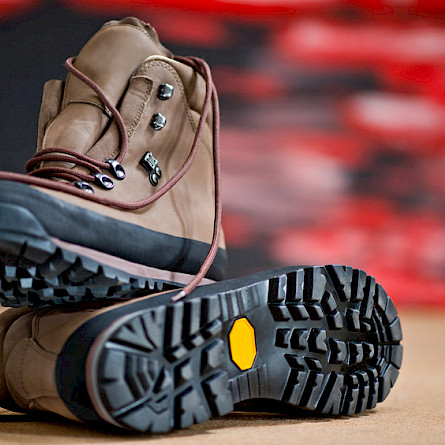My son, Christophe, then told me about this “boots theory” which had been mentioned in one of the books he had read.
This piqued my curiosity and a little research on the subject led me to an interesting article, published in December 2019 on the Moneywise financial magazine website, and written by Mr. Tom Huffman: “Boots Theory of Socioeconomic Unfairness”.
Apparently, the boots theory explaining socio-economic injustice comes to us from a book written by Mr. Terry Pratchett, author of fantasy novels and known for his Discworld series of 41 novels.
The theory comes from a dialogue from the book Man at Arms of the series, published in 1993, and in which a certain Captain Samuel Vimes gives his opinion regarding the differences between the consumption habits of rich and poor people:
“Take boots, for example. He earned thirty-eight dollars a month plus allowances. A really good pair of leather boots cost fifty dollars. But an affordable pair of boots, which were sort of OK for a season or two and then leaked like hell when the cardboard gave out, cost about ten dollars. Those were the kind of boots Vimes always bought and wore until the soles were so thin that he could tell where he was in Ankh-Morpork on a foggy night by the feel of the cobbles.
But the thing was that good boots lasted for years and years. A man who could afford fifty dollars had a pair of boots that’d still be keeping his feet dry in ten years’ time, while the poor man who could only afford cheap boots would have spent a hundred dollars on boots at the same time and would still have wet feet.”
For the author, this theory would largely explain the gap between the rich and the poor.
Although my journey is much less literary, I have come to similar conclusions regarding investing in stocks on the stock market. In fact, Warren Buffett arrived at this conclusion long before me, having devoted the first years of his investing career to what he called “cigar butts”, those stocks which one can buy for very little and which still offer us some good puffs of smoke. After a few years and with the guidance of Charlie Munger, Buffett realized that it was much better to invest in high quality businesses at a reasonable price and hold onto them for many years – the equivalent of $50 boots.
Like the best boots, high-quality stocks bought at a reasonable price end up being much better investments over the years than a bunch of cigar butts or $10 boots. In addition, they keep your feet dry! This is because high quality companies typically cause much less stress as they will navigate tough economic times without too much trouble and continue to grow their profits and enrich their shareholders over the long term.
According to the boots theory, you have to buy quality at a good price to get rich in the long run. This is true for most consumer products, such as clothing or household appliances, and it is also true for stocks in stock exchange.





